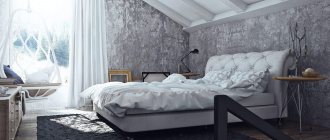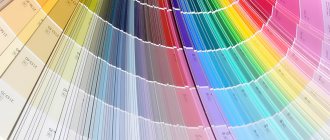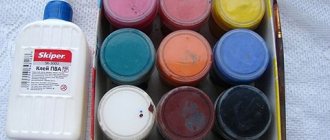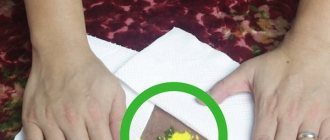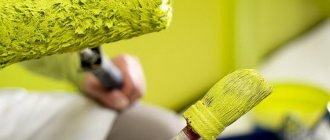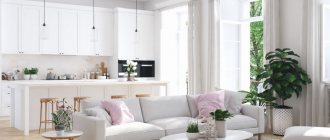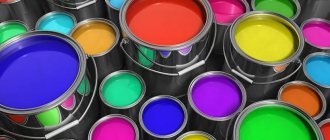Many buyers search for the appropriate color because ready-made acrylic paint is not available in the desired shade or buyers need a special color. Today on the market you can find a lot of different color options from both domestic and foreign manufacturers. However, before making a purchase, it is very important to know the subtleties of choosing a particular color for acrylic enamel.
What it is?
Color for acrylic paint is a special concentrated dye, which is added in a certain volume to the color mixture to obtain a particular shade. Subsequently, the paint is thoroughly mixed with the pigment and applied to the required surface. The shade of the mixture can be adjusted manually according to the recommendations given in the instructions.
Using the correct proportion, you can obtain the desired intensity of a tone of a specific color , and you can also mix several shades of colors, adding them to one acrylic mixture.
It is very important to follow the instructions when adding it to acrylic paint, since any deviations from the proportions may further degrade the quality of the acrylic itself.
Types of colors by release form
The entire variety of colors can be divided into three large groups depending on the form of their release:
- Powder - are the most affordable. Please note that only water-based paint compositions can be tinted using dry pigment. The palette of possible colors is very limited. Also, powdered dyes are not very convenient to use in terms of calculating the exact dosage. If you don't use special measuring spoons or scales, you will never know how much color you added to the base. Another disadvantage is poor solubility. To obtain a composition that is truly uniform in color throughout the entire depth of the container, you need to mix very thoroughly and for a long time;
Varieties
To choose the right color for paint, you should know the main types of such pigments. Today, many manufacturers offer universal colors that are simultaneously suitable for a wide variety of types of paints. They are considered the most popular among buyers.
Among the wide range you can find coloring pastes and colorants for acrylic paints. The latter use special resins that increase solubility, but at the same time reduce the viscosity of the pastes.
Tinting paint, when mixed with acrylic paint or enamel, allows you to achieve any desired shade. Color paste can be universal and suitable for all types of paints or for some specific options. With pastes, it is very important to maintain all proportions in achieving one or another shade of paint.
The Russian market offers colors based on organic and inorganic pigments. Organic varieties are considered brighter and more saturated, but at the same time they are less light-resistant, in addition, chemical and alkaline influences are extremely undesirable for them.
Colors with inorganic pigment are considered more light-resistant; they do not fade over time and do not lose their former brightness, but they do not have the largest color palette.
Many manufacturers offer matte varieties of colors, as well as pearlescent options and colorants with a metallic sheen. All of them are suitable for most types of acrylic paints and enamels.
Types of colors by composition
Probably each of you can imagine in theory how the process of giving ordinary white paint the required shade occurs. The main thing in this matter is to choose the appropriate type of color, which is a concentrate of a certain color. Depending on the added amount of this composition, the saturation and intensity of the final paint color will change. By the way, the technology for creating a new shade has two names that imply completely different actions:
- Tinting, which we will talk about today, is when pigment is added to a white base in order to obtain one of the possible color tones. In this case, the saturation depends on the amount of pigment in the composition;
- Glaze - when two or more colors are mixed to obtain a new, third color. For example, when blue and yellow are mixed to make green. In this case, only the colorants can be mixed first, and then the resulting mixture can be added to the white base to obtain a less saturated tone. It is rational to do this when there was no tint of the desired color, or when there were leftovers of two colors on hand, which, when mixed, give the desired result.
All colors, depending on the origin of the pigments in their composition, can be divided into two types:
- Organic;
- Inorganic.
In the first option, the color will have a more saturated, rich and bright shade, which is undoubtedly an advantage. Their color palette is very wide. However, the finished paint composition based on such a color will have low light fastness, that is, it will fade very quickly in the sun and lose its spectacular original color. In addition, if the paint is applied over mineral-based plaster, which emits a small amount of alkali, this will negatively affect the coating.
Do-it-yourself paint tinting at home
Colors of inorganic origin are more resistant to ultraviolet radiation and retain their original shade for a long time. But in comparison with organic pigments, the resulting tones will be muted and less concentrated. And the range of possible colors will be more limited.
Based on this, many recommend choosing the first type of colorants if artificial lighting will predominate in the room to be painted. And give preference to the second type of colors if you plan to paint bright rooms filled with natural light throughout almost the entire day.
How to choose?
When choosing a color, do not forget that water-based pigments in their usual form look much brighter and more saturated than when they have already dried. This factor must be taken into account when selecting the desired pigment.
When choosing the right shade of color, do not forget to consider:
- Indoor lighting. Faux colors can give cool colors a slightly warmer tint, but warm colors can look lighter;
- Light tones of colors, for example, single, powdery and milky, can help visually expand even a small room, for example, if you are planning to paint the walls with acrylic paint.
If you have already purchased a specific color and you need to get the same color again, it is best to purchase products from the same manufacturer.
In addition, if you are not sure that you have correctly calculated the amount of material you need, including color, it is best to use the services of specialists.
"Recipes" of the most popular shades
Now in the interiors of modern homes, you can find the most varied and boldest shades. It happens sometimes - you look at a color and think, how did you get it? Let us give an example of the most noble shades and their composition in percentage:
- Royal red – add 5-10% cool blue to a cold red base. You can experiment with the same content, but with warm colors;
- Tomato red - easy to get by adding 5% yellow and 5% brown to the base red;
- Raspberry - its base has a blue color, to which 1-2% of white, brown and red are added. If the intensity is insufficient, add again a small amount of auxiliary colors in equal parts;
- Olive - 10-20% yellow is dissolved in a green base, depending on the desired saturation;
- Turquoise green - add no more than 20% blue to the standard green base;
- Bottle green - obtained by mixing yellow and 20-40% blue;
- Turquoise blue - easy to get by adding 10-15% green to the standard blue color;
- Royal blue - this chic shade is obtained by adding 10-15% black and 2% green to a blue base;
- Saturated dark blue - obtained by adding 5% black and 2% green to the blue color;
- Golden brown - for a shimmery effect, add 10% blue, 10% white, 10% red to yellow. At the same time, the higher the percentage of yellow base, the higher the contrast;
- Mustard - to the yellow base you need to add 5% black, 5% red, 1-2% green;
- Noble pink-gray color - obtained by adding up to 5% black and up to 5% red to white;
- Gray-blue tint - obtained by adding 5% light gray and 1% blue to a white base. With the same proportions, but with the addition of green instead of blue, they will give a gray-green tint;
- Lemon yellow - a bright and positive color is obtained by adding 5% white and 1-2% green to standard yellow. Moreover, if the base yellow is of a warm shade, then the final color will be more yellowish;
- Sea wave color - can be obtained by adding 35%, no more, green and 5% black to white paint;
- Royal purple - obtained by adding small quantities and equal proportions of black and blue to a red base until the desired level of saturation is achieved;
- Burgundy – add 5 to 10% of each color to the red base, but in equal parts – yellow + brown + black;
- Plum is a wonderful shade obtained by adding 10% black, 10% blue and 5% white to a red base.
All of the above is a clear example process . After which the resulting shade can be used either as an independent composition, or as a color, which is usually diluted in a white base.
Where are they used?
Most often, colors are used when you need to choose a certain shade, taking into account the entire design of the room, as well as when decorating the interior, when you may need some special color of acrylic paint. But to get it, you just need to add the necessary pigment to the acrylic mixture.
You may also need color schemes if the shade of paint you need is not on the counter. Thanks to the right colors, you can not only revive the design of the room, but also make cosmetic repairs in a fairly short time.
Machine tinting
In large stores of finishing materials, acrylic paints are presented in a wide variety of colors. You can get acquainted with the various options by looking at the shade catalog.
It’s very convenient to order paint of the chosen tone in the required quantity without leaving the counter. Thanks to a special computer program, the machine will mix the dye with the white base in the required proportions, and the problem will be solved.
It is advisable to calculate the consumption in advance in order to purchase the material in one batch. Even with machine mixing, there may be a slight difference in the tone of compositions tinted in the same color, which will lead to a visual defect in the decorative coating.
There are two types of enamel tinting:
scientific It is mainly used for painting small volumes of product surfaces. In addition, it is also applicable in such works as renovation of premises, etc. The main advantage of the manual method is the ability to create colors according to your own taste and color perception. In addition, it does not require large financial costs and can be carried out indoors. However, manual tinting of enamel also has its drawbacks. And first of all, it is still impossible to obtain a high-quality color range, and mixing occurs unevenly.
Tinting using special equipment (automatic). This process is possible through the use of appropriate technology and software. This way you get a wide range of color palettes in large production volumes. The enamel is tinted quickly and efficiently; all the necessary components are mixed in special equipment. You just need to select the desired color or shade, set the program, and a modern device will do the rest for you.
Advantages and disadvantages of colorant
Pigment for latex, acrylic or oil paints has its own individual advantages and disadvantages. One of the most obvious strengths is the affordable purchase price. A good quality dye will not cost too much. In addition, white paint can be much cheaper than colored paint.
Another advantage is the unlimited possibilities for creating flowers. By choosing our own pigmentation, we can choose the intensity of the paint, as well as create spectacular patterns. Thanks to the ability to combine dyes, we get almost unlimited decorative possibilities.
Unfortunately, pigments are not without their drawbacks. One of the inconveniences is the question of how much paint pigment will meet our expectations. The choice of the amount of dye is an individual matter, and the final effect is never unambiguous.
Quality pigments provide long-lasting and striking colors, but the final shade depends only on our skills.
Another drawback is the inability to recreate paint of the same shade. Therefore, it is recommended to mix all the paint that we will need to paint the room. Once the finished mixture is finished, it will be difficult for us to create an identical color.
Tinting
We tint paint and enamel
As I already wrote, usually base C is tinted with dark colors, and base A with light colors. But if we want to get a completely opaque dark coating, then it makes sense to tint base C in a dark tone, and if we need a glazing composition, then we tint base A in light colors. The result will be a tinted varnish. You just need to understand that the color in which the base is tinted will not match the table. It will have to be propped up by eye.
There are several subtleties with tinting. Firstly
, different paints from different manufacturers are tinted according to different schemes, that is, to obtain the desired color, different amounts of different pigments must be added to different paints.
Once, I was mistakenly tinted with one paint according to the scheme of another. We tinted it gray and ended up with a dirty orange color. Secondly
, the dispensers of tinting machines tend to dry out if they are not used.
And each pigment has its own dispenser. If the dispenser is dry, then the amount of pigment that is set will not flow through it. The color will be completely different. So you need to tint on those machines on which this is done every day. If tinting is carried out once a week, then the color you need may not be used for months. It will definitely dry out in a couple of months. Thirdly
, even two perfectly working tinting machines give slightly different shades. If you paint one wall with paint tinted a certain color in one place, and another wall with paint tinted the same color in another, then you will not notice anything, but if you paint one wall with paints tinted in different places, then you probably , you will see the differences. The wall will be striped.
Step-by-step instructions for tinting your own paints
The tinting process is not complicated, you just need to adhere to the main rule - do not rush. Many people make the same mistake, which leads to unnecessary additional expenses - they immediately add a large amount of color, and then start mixing the composition. Naturally, in the vast majority of cases, the result will be unpredictable.
We will act carefully and clearly:
- First, let's prepare all the necessary tools that we talked about in the paragraph above;
- Let's prepare a work area for ourselves - cover the floor if it already has a finishing coat, since it is best to dilute the paint in the room for which the shade is being selected;
- We will begin work by preparing a so-called sample, that is, a small amount of tinted paint. At this stage, our task is to decide on the proportions and feel the mixing process itself. After all, the paint must be painted evenly and have a coherent structure;
- To prepare the sample, pour a small amount of white paint into a clean container. Many people don’t write this, but it’s best to use a measuring cup so you don’t have to guess later how much base there was. After this, draw a small amount of color into a syringe without a needle. Add the pigment to the base drop by drop, mix thoroughly and only then, if necessary, add the next drop of dye. You may not notice it by eye, but believe me, with each new drop the shade really changes;
Tinting paint at home
- When, after mixing, the shade is approximately similar to the desired one, stop. The fact is that the prepared composition should be a little lighter than the one you imagined . This is due to the fact that on a large surface, the tone may already be quite saturated;
- Count how many graduations on the scale on the color syringe you used. Write down the volume of the base and color on paper;
- Now you need to do a test staining. This will help you understand whether this is really the shade you need;
- To do this, you don’t need to paint the floor of the wall at all. A small fragment is enough. Literally 40x40 cm. Do not choose a section of the wall in the corner or close to the floor. In such places the shade will always appear darker;
- Color the square at your eye level. And don’t be afraid, if something doesn’t suit you, you can always cover it with the next layer of paint;
- Now we need to evaluate the result. Do not hurry. Look at the square from different angles. Also see how the color looks under different lighting sources. Turn on the overhead light, floor lamp, all together, turn off the light. It is advisable to work in the middle of the day, when there is enough natural light in the room to evaluate the influence of all possible light sources. If time permits, leave the paint on the wall until the next day. In the evening everything may appear completely different;
- If the work is postponed until the next day, close all containers tightly and place them in a dark place;
- Let’s say that the next day the shade is still pleasant to you, then you can safely prepare the working composition. It is very important to dilute the tinting paint with a small margin, just in case;
- When preparing, use the existing proportions. For example, you diluted 5 drops of color in 100 ml of base. This means that for 1 liter of paint you need 50 drops. But this does not mean that you need to add all 50 drops at once. Add 45, mix thoroughly with a whisk, look, add 3 more drops, mix, and only then add the rest of the color and mix again.
The result of tinting paints can be checked by painting a test fragment of the wall, which in case of an error can always be painted over
What should you consider when tinting yourself?
Before tinting the white composition in the chosen color, take into account the following:
- Acrylic paints intended for interior decoration differ in the degree of whiteness (this is especially true for aqueous dispersions). The higher this indicator, the better the quality of the base material, and the cleaner and richer the tone will be when tinting.
- Manufacturers often mark the packaging of materials as “for ceilings” or “for walls.” These recommendations should not be neglected, since the technical characteristics of such compositions always differ. The walls are finished with paints that create a coating that is more resistant to abrasion and stains, and the ceilings are usually treated with vapor-permeable paints.
- On a large area the color looks brighter, and on a wall with a window opening it looks darker. A textured painted surface will also look a shade or two darker.
- A glossy finish “plays” with the shades present in the interior and reflects light, while a matte finish usually looks more restrained and monotonous.
Manufacturers of dyes for acrylic paint
There is a huge selection of colors made in Russia, America, China and Europe. There are more universal compositions that are suitable for various paints, there are those that are mixed only with water-based, oil-based, alkyd and other paints of a specific composition. Colors that are suitable for acrylic paints are intended for coloring water-dispersion bases.
When choosing a color, be sure to look in the instructions for what type of paint it is intended for. For acrylic paints, universal colors or those designed for water-based and water-dispersion bases are suitable.
For example, well-known manufacturers of tints that are suitable for tinting acrylic are:
Dufa. High quality color made in Russia. It is a liquid based on synthetic resins. Offers a huge palette of colors and is suitable for all water-dispersion paint compositions, including acrylic. It has high light resistance and is therefore suitable for both indoor and outdoor use.
Luxens. This color is easy to find in hardware stores, such as Leroy Merlin. More budget-friendly than Dufa, at the same time, in addition to water-dispersion paints, it is suitable for working with alkyd and other types of paints. A distinctive feature of this brand is the use of the ready-made mixture only for interior work.
Parade. Russian manufacturer produces water-dispersed liquids and pastes. Suitable for tinting all water-dispersed compositions, including putty and decorative plaster. Universally suitable for both external and internal work. The manufacturer positions these colors as environmentally friendly materials, so they can be used to renovate children's rooms.
These are not all companies that produce colors for acrylic paints. Click if you are interested in exploring other color manufacturers.
Colors suitable for acrylic paint

